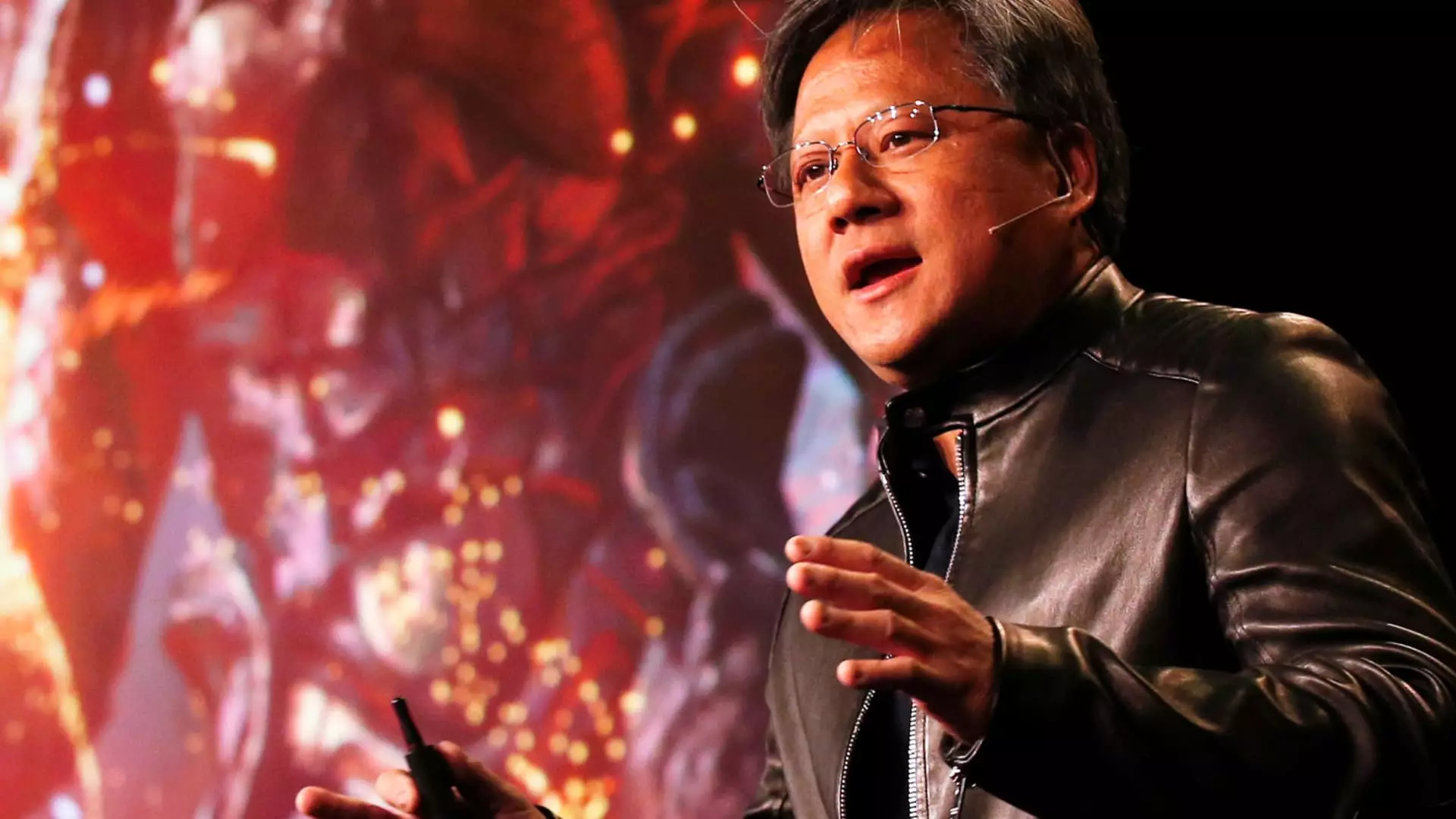Nvidia’s stock faced a dramatic upheaval recently, primarily influenced by the emergence of a groundbreaking artificial intelligence model developed by the Chinese startup DeepSeek. This event not only triggered a surprising plunge in Nvidia’s stock value but also sent shockwaves through the entire tech industry, serving as a stark reminder of the volatility that reigns in the stock market. Following a staggering loss of over $595 billion in market capitalization on a single day — the largest in history — Nvidia’s stock saw a partial recovery, with a 2.5% rise in early trading the next day. Such fluctuations highlight the precarious nature of technological investments amid rapid advancements.
The impact of DeepSeek’s open-source AI model cannot be understated. Reports indicated that this new model outperformed those created by renowned tech giants, including OpenAI, at a fraction of the development cost—less than $6 million compared to the billions expended by larger companies. The emergence of such competitive alternatives raises pertinent questions about the sustainability of Nvidia’s current market dominance. As an established leader in the artificial intelligence chip market, Nvidia has positioned itself as the backbone of numerous AI applications. However, the sudden viability of lower-cost models threatens to disrupt both Nvidia’s and its competitors’ business models.
Market reactions often stem from fear of the unknown, especially when concerning technological advancements like those presented by DeepSeek. The initial sell-off, which contributed to a 3% decline in the Nasdaq Composite, reflects broader anxieties among investors about the potential bursting of an AI stock bubble. Analysts are now urging a nuanced understanding of the situation. While some contend that enhanced competition could lead to price deflation and a more democratized access to advanced AI technologies, others express caution about potential market disruptions that could curtail investment enthusiasm.
One predominant view among market analysts is the idea that DeepSeek’s innovations signify an evolution in artificial intelligence. Barclays analyst Raímo Lenschow suggests that the advent of more powerful and cost-effective models could ultimately enhance the adoption of generative AI across industries. This perspective frames the situation not solely as a challenge for Nvidia, but also as an opportunity for broader advancements in the tech sector.
Nvidia’s Response: A Balancing Act
In response to the upheaval, Nvidia acknowledged the significance of DeepSeek’s advancements while maintaining its optimistic outlook. An Nvidia spokesperson referred to DeepSeek’s model as “an excellent AI advancement,” a statement showcasing the company’s commitment to innovation while subtly indicating no immediate threat posed by competitors. It’s a balancing act—recognizing competition while reassuring investors that Nvidia remains a pivotal player in the AI arena.
Despite this optimistic rhetoric, the reaction from financial analysts has been mixed. Some have upheld their confidence in Nvidia’s long-term prospects, albeit with margins adjusted to reflect the current scenario. Morgan Stanley’s Joseph Moore, for instance, retained his positive outlook but reduced the company’s price target. This indicates an understanding that while Nvidia still holds considerable power in the tech market, evolving dynamics warrant a cautious approach.
As Nvidia’s stock remains approximately 23% below its all-time high, the perceived stability of the company is called into question. While the endorsements from Wall Street analysts provide some measure of reassurance, the fluctuating market sentiment reflects an environment riddled with uncertainty. Investors are left to ponder whether the developments around DeepSeek will result in disruptive innovation or simply serve as a catalyst for Nvidia to evolve and adapt.
While Nvidia’s recent experiences might portray an unsettling landscape, they also provide a fertile ground for dialogue about the future of AI technology and investment. Whether the company emerges stronger from this turmoil largely depends on its ability to navigate the complexities introduced by emerging competitors while continuing to set industry standards in AI development. The challenge now is not merely to survive the competition, but to innovate in ways that reinforce Nvidia’s leadership position in a rapidly changing technological world.


Leave a Reply